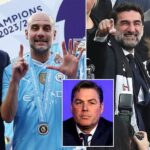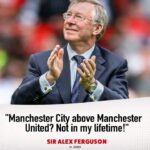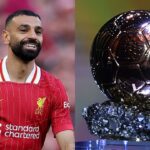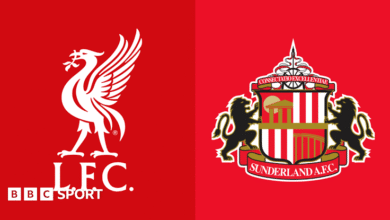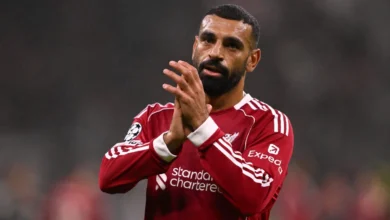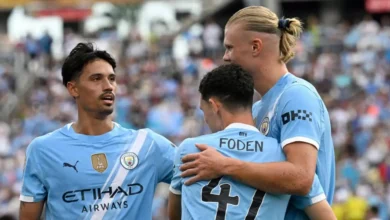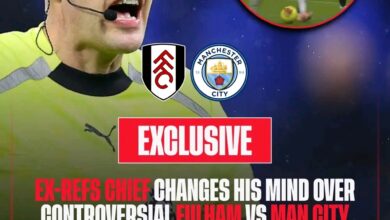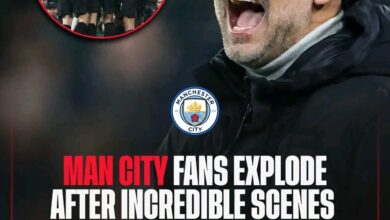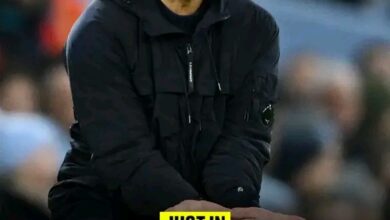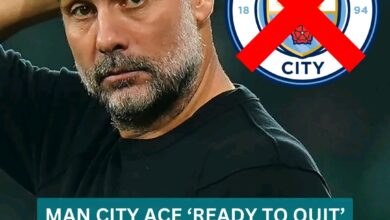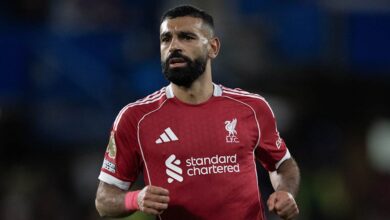Liverpool vs. Man Utd Combined XI: Red Devils Surprise in Key Area
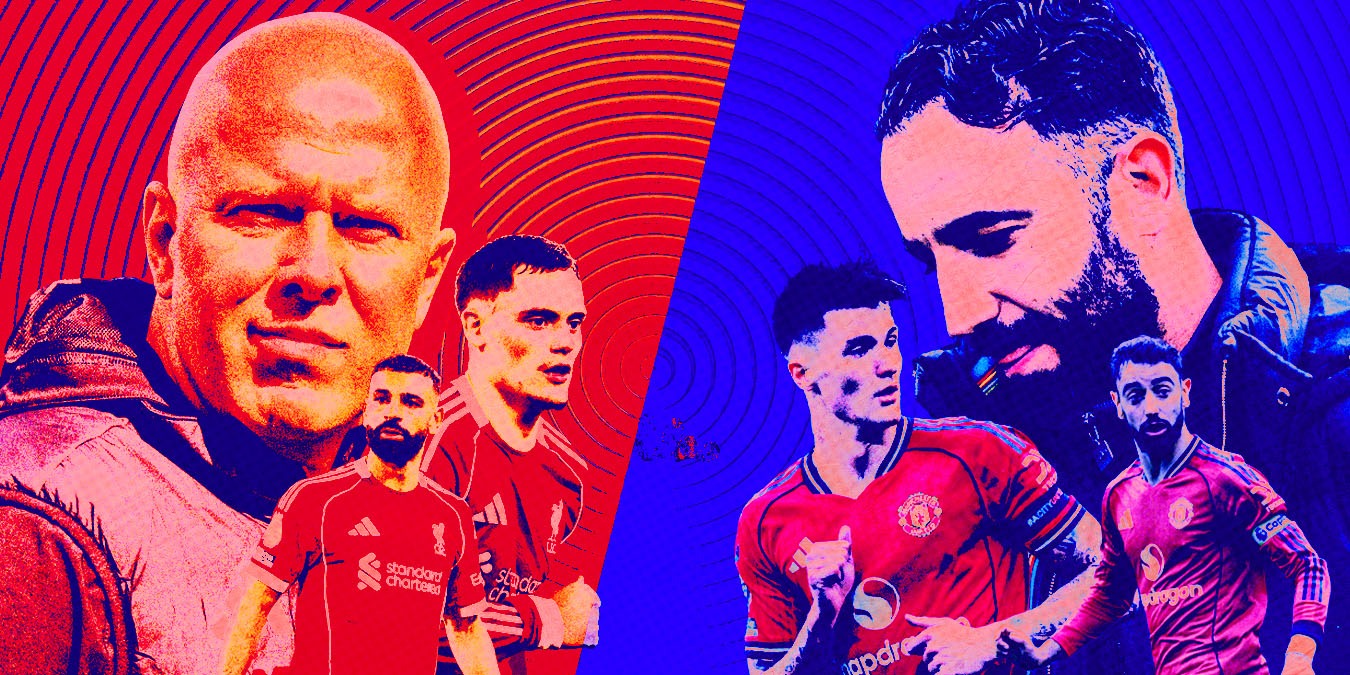
The noise around the North-West of England has grown louder with every passing hour. Liverpool against Manchester United is never just another football match; it is war dressed up in football shirts. Every chant, every stare, every tackle carries decades of rivalry. Yet this time, on the eve of another battle, the talk is not only about who will win, but about who deserves to stand side by side in a combined starting eleven. A single list that shows where both giants truly stand.
The question has shaken pubs, dressing rooms, and television studios: who would make the combined Liverpool-Manchester United XI? Some expected the answer to be simple. Liverpool have been flying high under Arne Slot, while United have been unpredictable under Erik ten Hag. But football has a strange way of writing its own drama, and the final picks left many fans speechless.
The day began with excitement on Merseyside. Red scarves waved in the wind outside Anfield as fans debated loudly. “There’s no United player good enough for our team!” one shouted near the Shankly Gates. Across town in Manchester, the same argument burned with different words. “They act like gods, but we still have world-class players,” a United supporter replied on radio. Everyone believed their side owned the bragging rights.
When the combined XI was finally revealed, shockwaves rolled across both cities. There was pride. There was anger. And, above all, there was disbelief — because Manchester United had managed to sneak more players into the lineup than many expected. It was a reminder that, even when struggling, the Red Devils still carry power in their name.
In goal stood Alisson Becker, the calm wall from Brazil. Even the most loyal United fan couldn’t argue much about that. Andre Onana has improved, yes, but Alisson remains a master of control, reflex, and leadership. Every time Liverpool look shaken, he appears like a statue carved from confidence. His inclusion was no surprise.
The defense, however, sparked fire. At right-back, the panel leaned toward Diogo Dalot instead of Trent Alexander-Arnold. The explanation was tactical: Dalot’s balance between defense and attack gave United an edge in the selection. Still, many fans saw it as a crime. “Trent is Liverpool’s heartbeat,” one journalist wrote. “He creates from deep; he runs the game like a midfielder wearing a defender’s shirt.” But the selectors stood firm. Dalot’s consistency under pressure this season had earned respect.
In central defense, Virgil van Dijk took his usual place, calm and commanding. Yet next to him came a surprise — Lisandro Martinez. Injured for months last year, the Argentine warrior had returned with passion and fire. His bravery, his tough tackles, his ability to play from the back convinced the judges he deserved the spot. For once, Liverpool and United fans found common ground. Both could respect a fighter.
At left-back, Andy Robertson carried the flag for Liverpool again. His energy, overlapping runs, and endless determination made him an easy pick. Even United fans whispered grudging respect. The Scot has built a reputation for doing the dirty work with a smile.
The midfield was where the argument truly exploded. For Liverpool supporters, Alexis Mac Allister and Dominik Szoboszlai were obvious picks. For United fans, Bruno Fernandes and Casemiro had to be there. After hours of debate, the final trio was revealed: Casemiro, Mac Allister, and Bruno Fernandes.
Casemiro, despite his age and uneven form, remained the anchor. His experience, Champions League pedigree, and leadership kept him alive in the selection. Mac Allister, on the other hand, brought calm creativity, blending World Cup experience with Premier League energy. Bruno Fernandes completed the trio with his flair for goals and passes. It was a midfield packed with brains and bravery — a perfect mix of Brazilian fire, Argentine elegance, and Portuguese imagination.
By the time the forward line was announced, social media had turned into chaos. Everyone wanted to know whether Mohamed Salah would keep his place as Liverpool’s king. He did. Nobody could touch his record or his aura. The Egyptian continues to haunt Manchester United year after year. With 19 goal contributions against them, he walks into this combined team like a man walking into his own house.
Next to Salah came Cody Gakpo, another Liverpool man whose best moments seem to arrive whenever United appear in front of him. The Dutchman’s ability to drift between the lines, to hit from nowhere, and to stay calm under pressure earned him his spot.
But it was the centre-forward role that shook the world. Instead of Darwin Núñez or Gakpo moving centrally, the panel named Rasmus Højlund of Manchester United. That choice divided fans more than any other.
“How can Højlund get in ahead of Núñez?” a furious fan posted. “Núñez runs like a lion; he’s chaos in human form.” Yet others argued that Højlund’s intelligence, movement, and finishing had started to show maturity beyond his age. Quietly, the Dane had begun to win hearts. His presence in the combined XI symbolized United’s new hope — a young striker determined to restore old glory.
As the dust settled, people began to read the lineup again and again. Alisson in goal. Dalot, Van Dijk, Martinez, Robertson across the back. Casemiro, Mac Allister, Fernandes in midfield. Salah, Højlund, and Gakpo up front. Six Liverpool players. Five United. The slimmest of gaps between two giants whose recent histories seem far apart.
The announcement sparked a storm of talk shows. Jamie Carragher laughed on television, calling it “a kind gesture to United.” Gary Neville smiled back, saying, “We’ll see who’s laughing after Sunday.” Fans filled phone-in lines, each convinced the experts had lost their minds. But beneath all the arguments lay one simple truth: both clubs still carry magic.
For Liverpool, this combined XI was proof of how far they had rebuilt after Jürgen Klopp’s exit. Under Arne Slot, the team’s identity had slowly reshaped. Salah still leads, but now he shares the field with younger energy — Gakpo, Szoboszlai, Gravenberch, Elliott — players hungry to make history. Slot’s calm but determined personality had turned uncertainty into belief.
For Manchester United, inclusion in this lineup offered something more emotional — redemption. Ten Hag’s men have struggled with form, injuries, and public criticism. Yet here they were, with nearly half the combined team. It was a message that their talent still breathes; their pride still burns. The inclusion of Martinez, Dalot, Casemiro, Fernandes, and Højlund gave fans a reason to dream again.
As Sunday approached, both training camps buzzed with tension. Reporters followed every session, noting small gestures and whispered conversations. Salah looked focused but relaxed, smiling as he practiced free-kicks. Højlund, on the other side, trained with quiet intensity, his eyes locked on the ground, his mind already at Anfield.
Inside Liverpool’s camp, Arne Slot told his players not to listen to the noise. “We know who we are,” he said. “We play with courage, we play with unity.” He reminded them that statistics and combined XIs mean nothing once the whistle blows.
In Manchester, Ten Hag’s words carried a different tone. “They think they own this rivalry,” he said. “Prove them wrong. Show them that the badge on your shirt still means fear.” The players nodded; they knew exactly what he meant.
The build-up became a drama of respect and rivalry. Every newspaper printed old pictures of classic clashes — Gerrard sliding on his knees, Rooney roaring at Old Trafford, Salah celebrating in front of furious United fans. It was a reminder that this fixture defines eras. It breaks hearts and creates heroes.
As matchday arrived, the air around Anfield felt electric. Red smoke from flares floated above the streets. Children waved flags; old men told stories of past victories. In pubs, fans repeated the combined XI like a ritual, arguing over every name.
When the players finally walked out, the stadium shook with noise. Salah led the line for Liverpool, his eyes burning with quiet determination. Across from him, Højlund stood tall, unafraid. Behind him, Bruno Fernandes clapped his hands, shouting instructions. The two sides carried not only their clubs but also the pride of generations.
From the first whistle, it became clear that this was not just football. Salah’s first touch sent the crowd wild. Robertson sprinted down the flank like a man possessed. Casemiro flew into tackles. Fernandes demanded the ball. For ninety minutes, history repeated itself — passion, mistakes, brilliance, chaos.
By halftime, neither team had broken through. Then, in the 53rd minute, the inevitable happened. A long ball from Mac Allister found Salah on the edge of the box. With one touch, he cut inside and curled the ball beyond Onana. The stadium exploded. The king had done it again.
That goal not only gave Liverpool the lead but also made history. Salah’s assist-plus-goal tally against United reached twenty. He joined the elite Premier League club — Rooney, Kane, Lampard, Shearer, Ferdinand — names carved into English football’s story. The crowd sang his name, and even neutral fans watching from afar smiled in admiration.
But United refused to collapse. Ten Hag threw on substitutes; Fernandes screamed for more energy. In the 78th minute, Højlund answered. A cross from Dalot found him between Van Dijk and Martinez. He leapt, twisted his body, and headed past Alisson. Silence, then stunned applause. The young Dane had written his line in the script.
The final whistle blew with the score locked at 1-1, but it felt like victory for both sides. Liverpool saw their king crowned again; United saw their future rise. And somewhere, the panel that had chosen the combined XI smiled. Maybe, just maybe, they had been right.
In the aftermath, newspapers rushed to print new headlines. “Salah Joins Legends’ Club,” screamed one. “Højlund Arrives,” declared another. On television, pundits argued again, but this time the tone was softer. Respect had replaced bitterness.
Football had done its job — to remind everyone that rivalry can coexist with admiration. Liverpool remained powerful, United remained proud, and together they had given England another story to remember.
Days later, Salah was asked how it felt to reach twenty goal contributions against United. He smiled gently. “It means a lot,” he said. “But what matters most is winning for Liverpool. Records come when you love what you do.” His humility melted hearts.
For United, Ten Hag spoke about Højlund’s performance. “He has the mentality we need,” he said. “This is how new stories begin.”
And maybe that’s what the combined XI truly represented — a bridge between eras. Salah, the established king; Højlund, the hungry prince. Van Dijk, the general; Martinez, the fighter. Casemiro, the guardian; Mac Allister, the dreamer. Together, they told the world that English football’s greatest rivalry is alive, burning brighter than ever.
As fans left the stadium, the chants still echoed through the cool night air. Some argued about who should have made the team; others just smiled. Because deep down, everyone knew they had witnessed something special — a match that honored history, a rivalry that refused to fade, and a story that will be retold for years.
The combined XI had sparked debate, but the match itself had written peace. It showed that legends and newcomers can share the same stage, that glory belongs to those who fight for it, and that Liverpool versus Manchester United will forever be more than a game. It is the heartbeat of English football — raw, emotional, unpredictable, and eternal.
